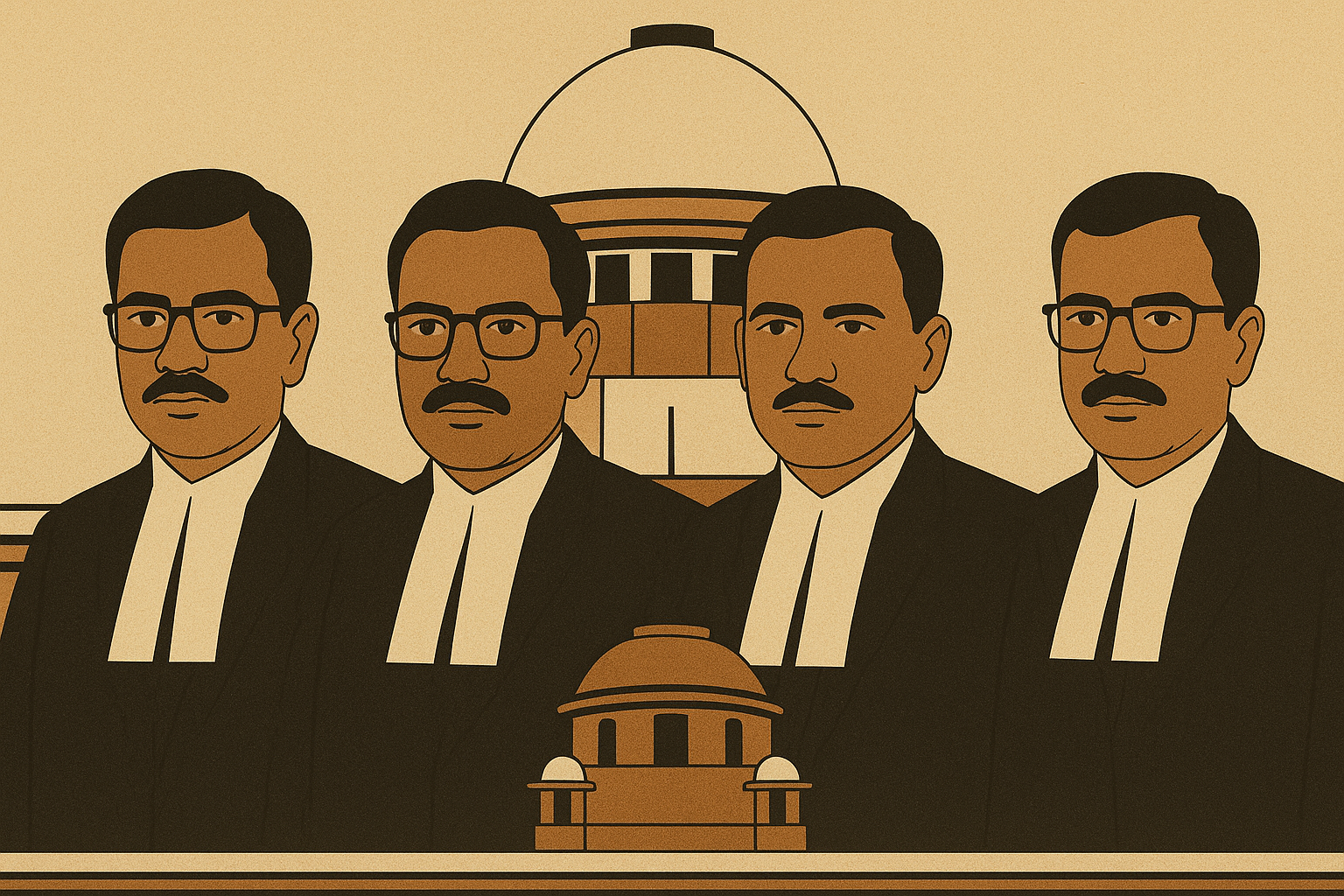
The Indian judiciary developed the collegium system as a unique method for appointing and transferring judges in the higher judiciary—the Supreme Court and High Courts. It is not explicitly provided in the Constitution but has evolved through judicial interpretation, particularly of Articles 124, 217, and 222.
Under article 124 president appoints the judges of the Supreme Court based on consultation of SC and HCs, as he may deem necessary. While consulting the CJI is compulsory, Article 217 states criteria for appointment of high court judges. This includes consultation with CJI, Governor of state and Chief Justice of that high court. And lastly article 222 states provision for transfer of judges. The President may do this after consulting the Chief Justice of India.
In establishment of the Collegium System the word consultation has played a central role. It highlights the judiciary versus executive debate which was deemed necessary for formation of the system.
Evolution Through Landmark Cases
The system has evolved from the three major cases: First Judges Case (1981) – S.P. Gupta v. Union of India, Second Judges Case (1993) – SC Advocates-on-Record Assn. v. Union of India and Third Judges Case (1998) – Re Presidential Reference.
The verdict given under the first case stated that the executive had primacy in judicial appointments, and the word consultation under articles 124 and 217 does not mean strict concurrence with the decision of the committee. The president could override the advice as he deemed fit. The Second Judges Case of 1993 overruled the 1981 decision, granting the judiciary primacy in the appointment of judges and interpreting “consultation” to mean binding concurrence on the President. This led to the introduction of the collegium system. In the Third Judges Case of 1998, the Supreme Court expanded the collegium in response to a Presidential Reference under Article 143 and ruled that the collegium members do not need to reach unanimity; instead, the majority opinion must prevail.
The expanded Collegium included – For Supreme Court appointments: CJI + 4 senior most SC judges, and for high court appointments: HC CJ + 2 senior most SC judges. While the SC Collegium is considered solely responsible for the transfers.
Procedure of Appointments and Transfers
The procedure for appointment of Supreme Court judges includes firstly initiation of the proposal after consulting four senior most judges by CJI followed by recommendations sent to Union Law Minister. The law minister then forwards it to PM who advises the president leading to appointment of judges. On the other hand, the High Court Collegium recommends names for the appointment of High Court judges and then forwards them to the state government for its input. Later the Union Law minister forwards it to SC Collegium which reviews and approves/ disapproves it. While the rest of the procedure remaining same. The Chief Justice of India initiates the transfer of judges after consulting the collegium, without requiring consent from the concerned judge.
Criticisms of the Collegium System
Even though the formation of collision system in India It’s a step forward in governance but lacks on several prominent issues. The system Is not transparent as the decisions are not published while the objective behind the criteria is disclosed. Also, the system is not accountable as there are no cheques by Parliament public or even executives. The collegium system follows an opaque process, as it neither records nor discloses reasons for selecting or rejecting candidates. It faces strong criticism for fostering favoritism and nepotism, with several allegations of appointing known or favored individuals. This issue affects all legal fields in India. Moreover, it breaches the Constitution’s principle of separation of powers, as the judiciary acts as its own judge in the appointment process without oversight from the executive or legislature.
The NJAC Attempt at Reform
The 99th Constitutional Amendment Act of 2014 attempted to reform this system by introducing the National Judicial Appointments Commission (NJAC). This commission aimed to replace the collegium with a broader body. It would include the CJI, the two senior-most Supreme Court judges, the Union Law Minister, and two eminent persons. They will be nominated by a committee of the Prime Minister, Chief Justice of India, and Leader of the Opposition. However, the Supreme Court struck down this reform in 2015 in the case of Supreme Court Advocates-on-Record Association v. Union of India. The judgement held NJAC as unconstitutional as it violated the basic structure doctrine especially the judicial independence.
Way Forward and Recommendations
This widely criticized system aims to institutionalize the appointment of judges. However, it is often seen as a major obstacle to fair and impartial justice in India. The separation between the executive and judiciary is meant to uphold judicial independence. Yet, it can sometimes result in power dominance under the guise of that independence. This system Follows a way of hierarchical system by appointing the candidate favourable and with same ideologies. Nepotism affects our Indian legal system, where first-generation lawyers often struggle for recognition, while many judges come from influential families and upper social classes. India recently on 14th May, 2025 got it first chief Justice of India Who belong to a scheduled class. Such systems Result in Maintaining the dominance of upper classes by not actually letting the people of other class and deprive them even of the opportunities to gain it.
Some reforms can overcome these lacunae by institutionalizing the collegium through the adoption of proper rules and procedures. Also, by increasing the stakeholders in the consultation process such as civil societies in the same way, academicians and bar. Introduce a dedicated secretariat to maintain records and ensure due process, and legislate clear guidelines for selection criteria that prioritize merit, diversity, and seniority.
Conclusion
Despite aiming to uphold judicial independence, the collegium system faces criticism for its opacity and lack of accountability. Yet, the judiciary resists executive interference, calling for reforms through internal changes or balanced institutional mechanisms.
